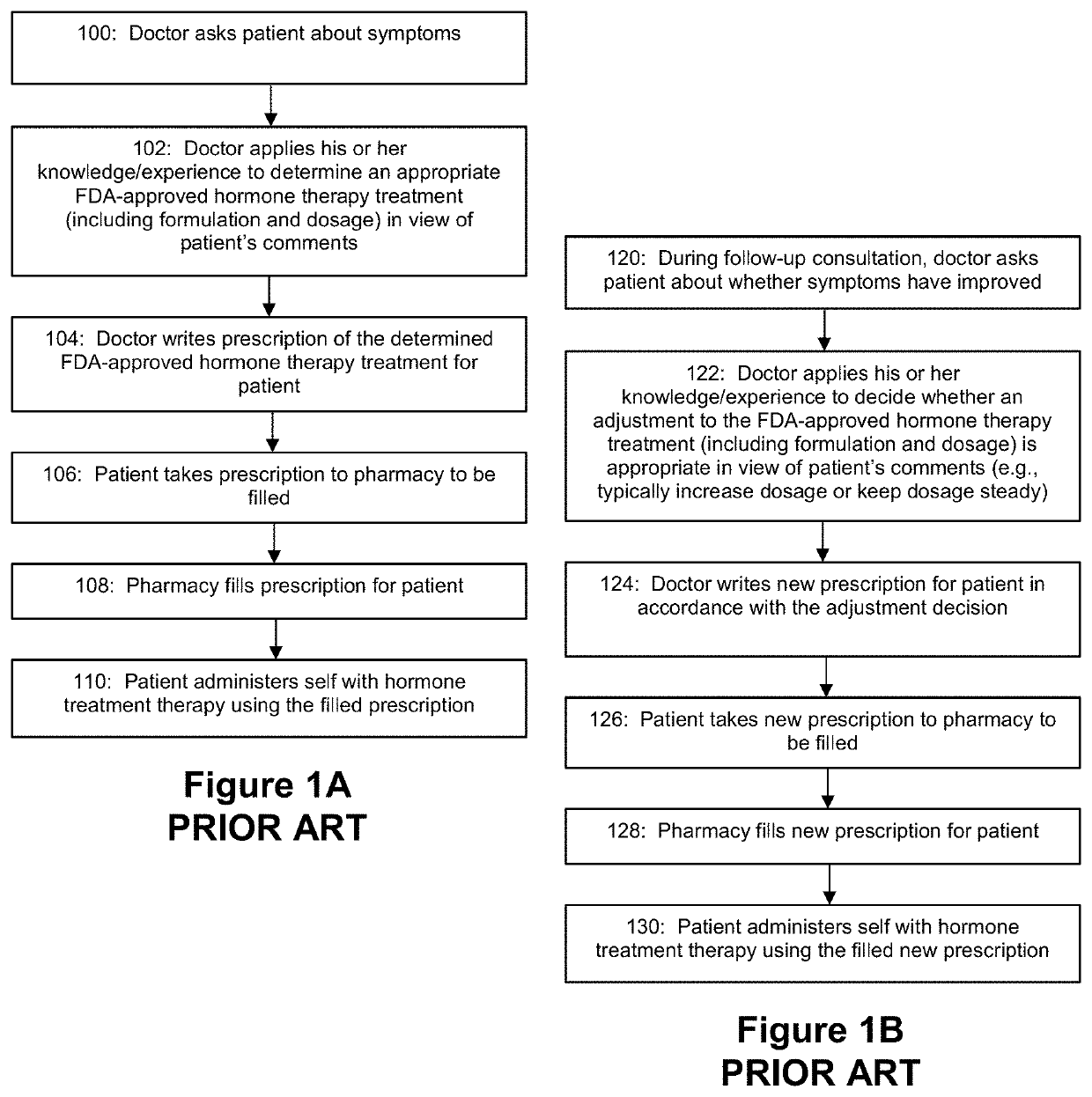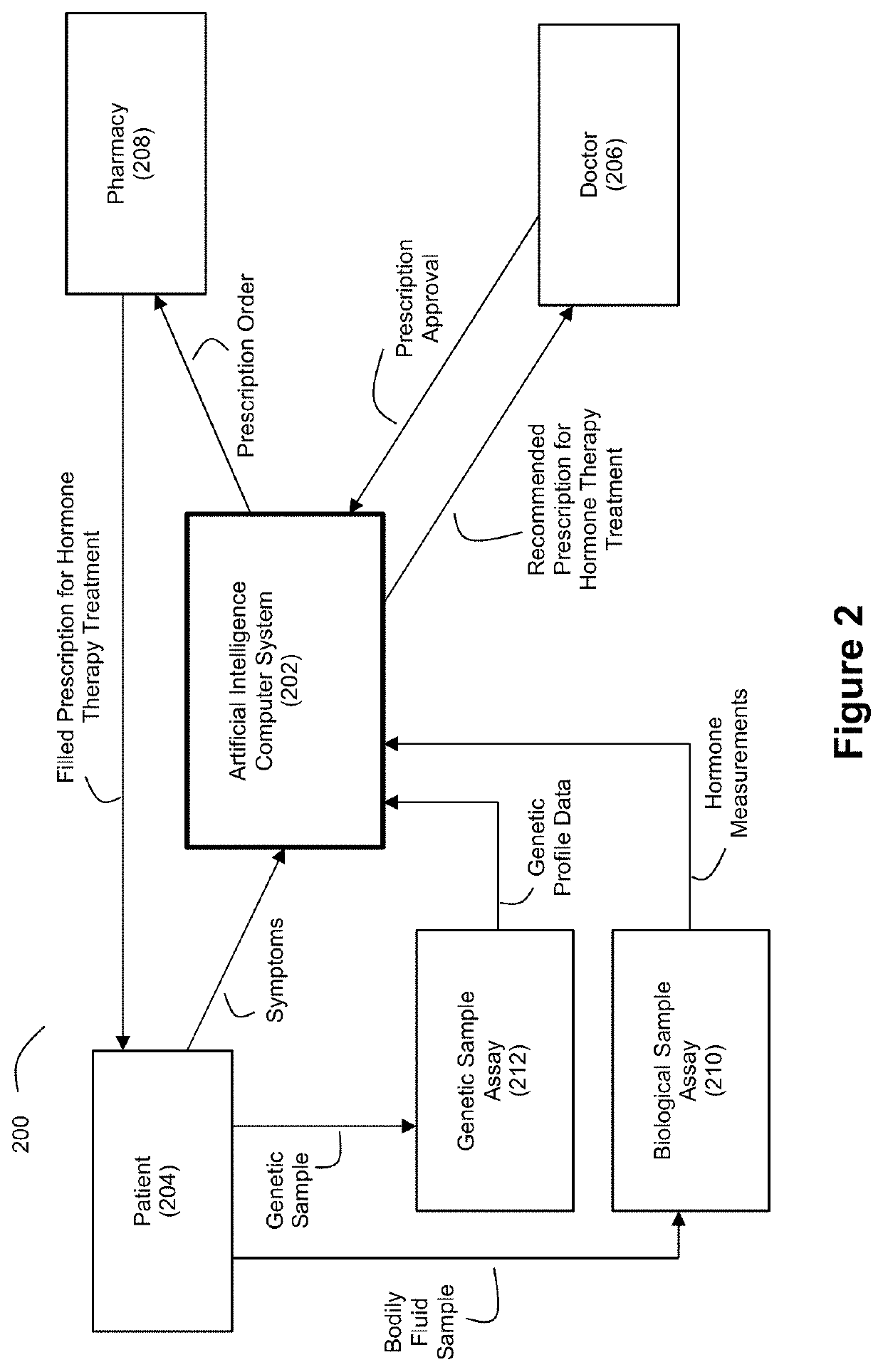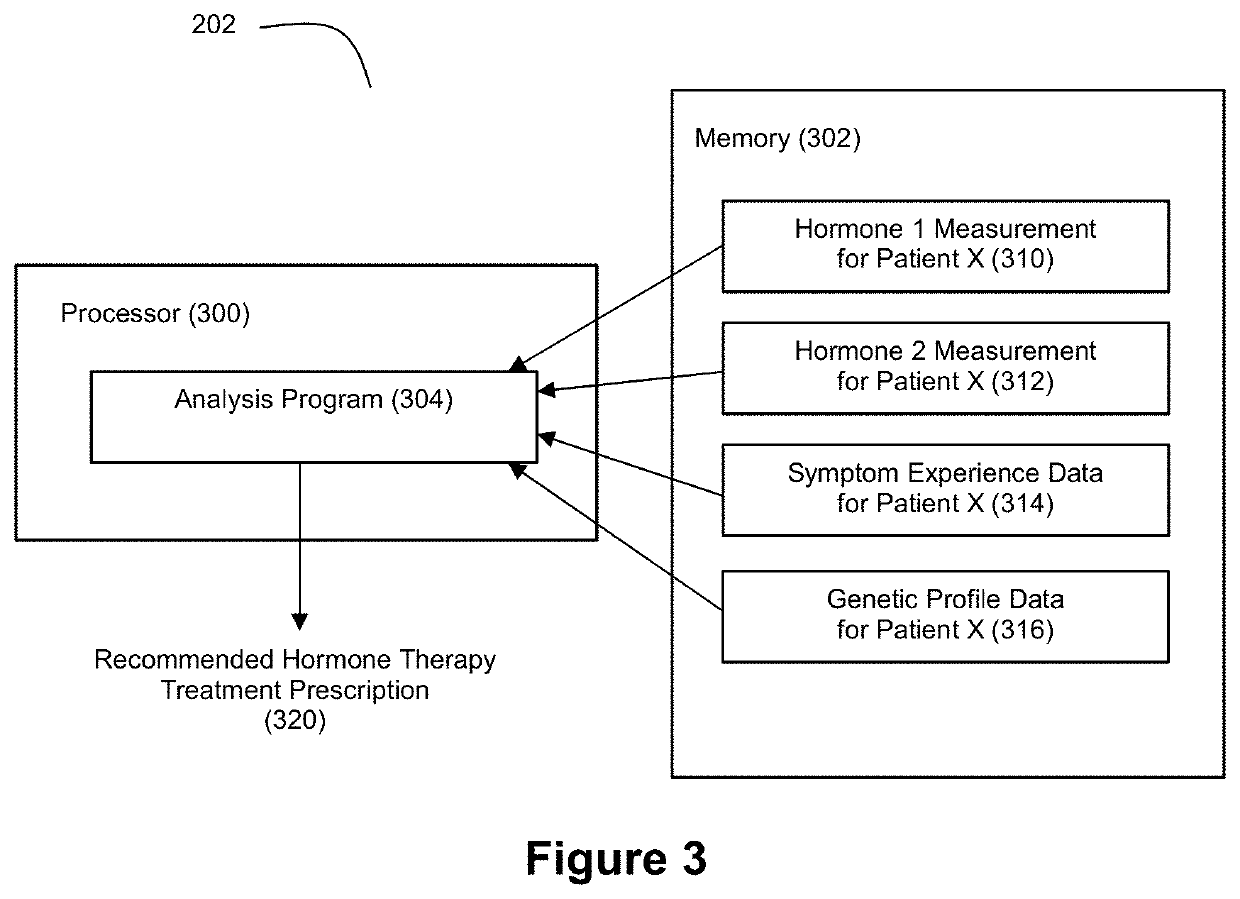Applied Artificial Intelligence Technology for Hormone Therapy Treatment
an artificial intelligence and hormone therapy technology, applied in the direction of growth hormones, hormone peptides, peptide/protein ingredients, etc., can solve the problems of large volume of patients, unregulatory or typical, and unreliable treatment results
- Summary
- Abstract
- Description
- Claims
- Application Information
AI Technical Summary
Benefits of technology
Problems solved by technology
Method used
Image
Examples
example use
Case: Progesterone and Estrogen
[0074]As noted above, in an example embodiment, the patient can be a woman who may be experiencing a deficiency of progesterone and / or estrogen (e.g., a patient who may be experiencing menopause symptoms). With such an example use case, H1 can be progesterone and H2 can be estrogen, in which case H1DF serves as a progesterone deficiency factor (PDF) and H2DF serves as an estrogen deficiency factor (EDF). It is expected that successful treatment of a woman's menopause symptoms arising from hormone deficiencies will need the proper amount of estrogen and progesterone (the dose) and their relative ratio within the prescription. With such an example, the data structure 410 used by the computer system 202 can be arranged as an array or grid of cells 702 as shown by FIGS. 7A-D. Each cell 702 in the array is indexed by values of EDF on the y-axis and PDF on the x-axis and can be populated with data that identifies the recommended prescription of progesterone ...
PUM
| Property | Measurement | Unit |
|---|---|---|
| time | aaaaa | aaaaa |
| body fat composition | aaaaa | aaaaa |
| clinical strengths | aaaaa | aaaaa |
Abstract
Description
Claims
Application Information
 Login to View More
Login to View More - R&D
- Intellectual Property
- Life Sciences
- Materials
- Tech Scout
- Unparalleled Data Quality
- Higher Quality Content
- 60% Fewer Hallucinations
Browse by: Latest US Patents, China's latest patents, Technical Efficacy Thesaurus, Application Domain, Technology Topic, Popular Technical Reports.
© 2025 PatSnap. All rights reserved.Legal|Privacy policy|Modern Slavery Act Transparency Statement|Sitemap|About US| Contact US: help@patsnap.com



